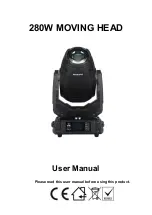
2.4 NIBP Measurement
99
2.4. NON-INVASIVE BLOOD PRESSURE MEASUREMENT (NIBP)
2.4.1. Cuff Selection and Placement
The oscillometric method used for the non-invasive blood pressure (BP)
measurement requires reliable registration of the pulse blood pressure fluc-
tuations. If they obtained heavily, then the measurement time increases, and
the measurement itself becomes unreliable.
The following conditions of the patient can prevent adequate registration of pulse fluctuations in
blood pressure:
patient motion (movement, trembling, convulsions);
cardiac arrhythmias;
connecting the patient to a heart-lung machine;
pressure fluctuation (rapid change in blood pressure during measurement);
shock, general hypothermia, and other conditions that decrease blood flow;
extreme values of heart rate (less than 40 or more than 300 bpm);
obesity (a thick layer of subcutaneous fat on the limb reduces the amplitude of vibrations
coming from the artery, and the measurement accuracy decreases).
Do not place the cuff on a limb with the inserted catheter or connected in-
travenous infusion line. This can damage tissue around the catheter by
slowing or blocking infusion during cuff inflation.
Do not apply the cuff to a limb with skin lesions at the site of application. It
is necessary to apply the cuff to the intact skin of the limb.
When carrying out frequent automatic blood pressure measurements in pa-
tients with serious bleeding disorders, use medical reports due to the risk of
hematomas appearing on the limb with a cuff.
Do not apply a cuff to a limb with a SpO
2
sensor, as this may distort oxygen
saturation readings.
If dry powdery substances (talc) contained in new cuffs get inside the de-
vice, they may damage the device.
To avoid this, before using a new cuff for the first time, it is necessary to
pre-purge it -
using a hand pump (a “bulb” from a medical device for manual
blood pressure measurement), pump the cuff and shortly release the pres-
sure by throwing off the cuff hose from the hand pump fitting. Repeat at
least 5 times.
Warranty service for cables that fail as a result of improper operation is not
performed.
Select the correct size cuff for the patient. The width of the cuff should be approximately 40% of
the circumference of the arm at the site of application (for newborns - approximately 50%) or 2/3
of the length of the upper arm (see Fig. 2-19)
An incorrectly selected cuff size can cause distortion of the pressure meas-
urement results (see Table 1 Appendix 5).
Cuff type
Limb circumference, cm
Neonatal (3-6 cm, 4-8 cm, 6-11 cm)*
3…6, 4…8, 6…11
For infants (11-19 cm)*
11…19
Summary of Contents for MPR6-03
Page 1: ...Patient Monitor MPR6 03 User Manual RM 501 01 000 01 01 UM Version 7 05 2020 ...
Page 2: ...2 ...
Page 193: ...193 ...
















































